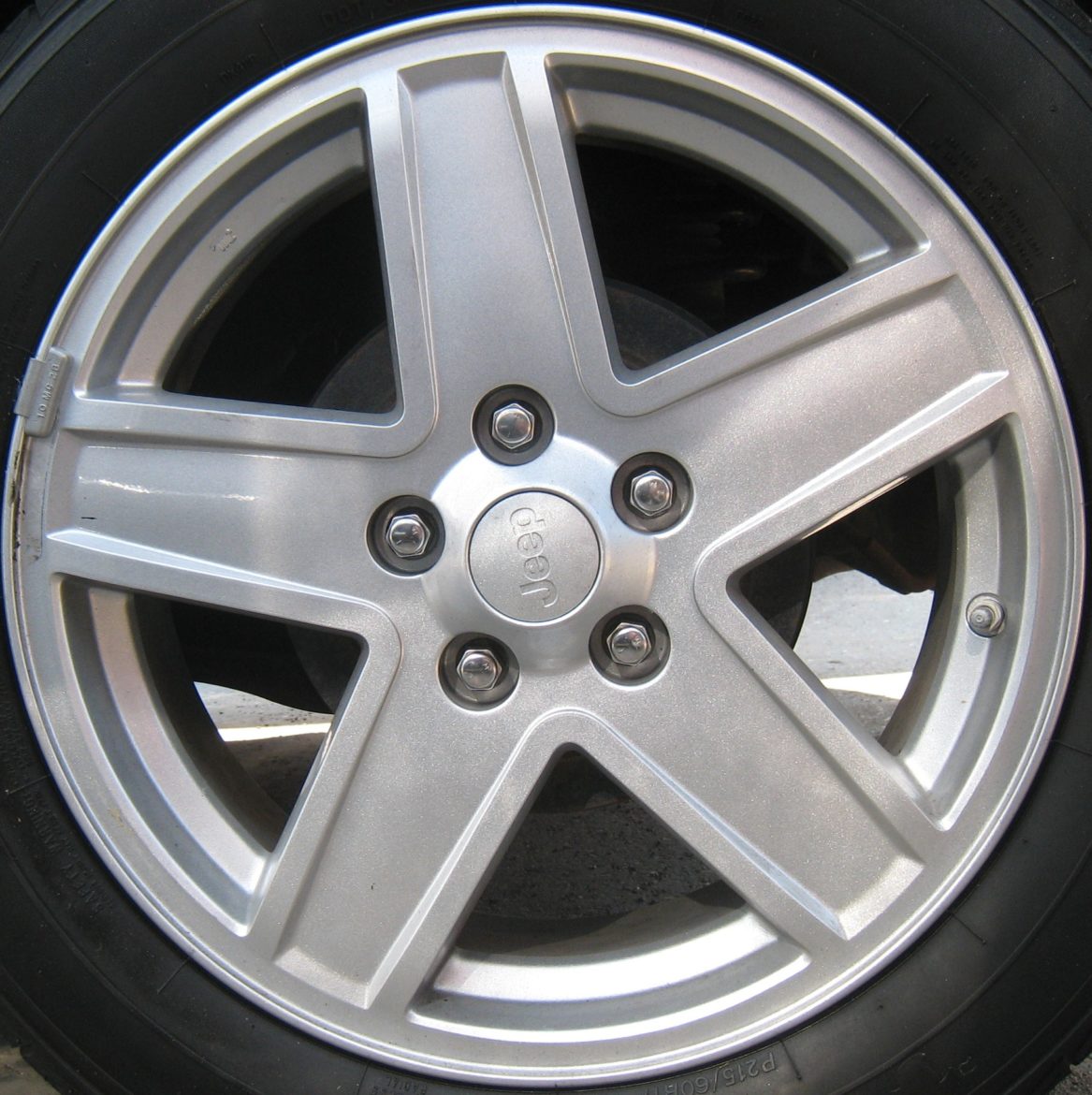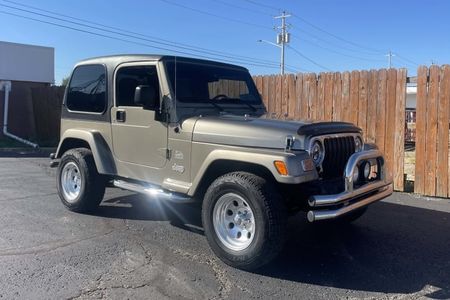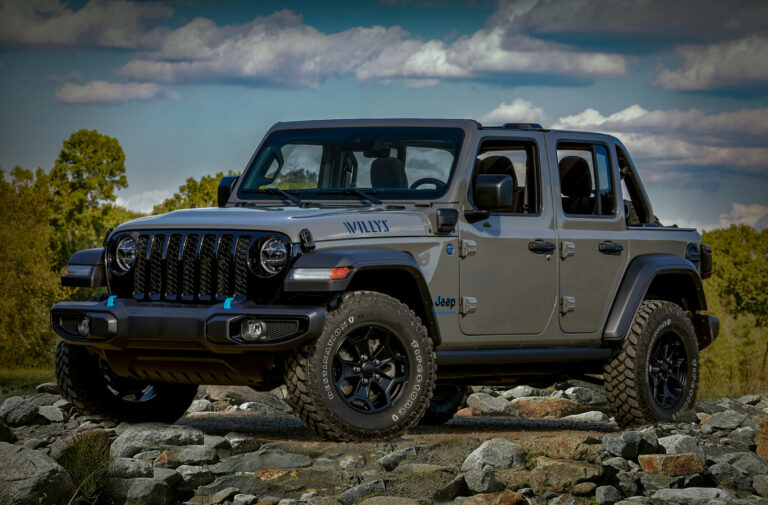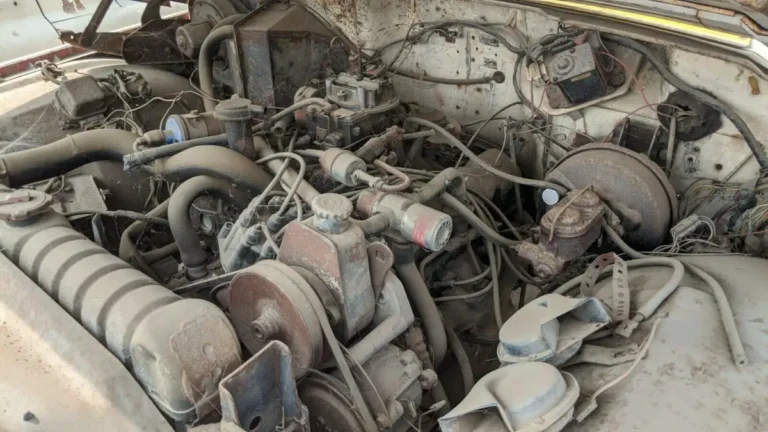Jeep Patriot Wheels And Tires For Sale: A Comprehensive Guide to Enhancing Your Ride
Jeep Patriot Wheels And Tires For Sale: A Comprehensive Guide to Enhancing Your Ride jeeps.truckstrend.com
The Jeep Patriot, a popular compact SUV known for its versatile blend of daily drivability and mild off-road capability, has been a reliable companion for many owners. Like any vehicle, its performance, safety, and even its aesthetic appeal are heavily reliant on one crucial component: its wheels and tires. Whether you’re looking to replace worn-out treads, upgrade for better performance, or simply refresh your vehicle’s appearance, understanding the world of "Jeep Patriot Wheels And Tires For Sale" is essential.
This comprehensive guide will delve into everything you need to know about purchasing new or used wheels and tires for your Patriot. We’ll explore the critical specifications, various types available, where to find the best deals, and crucial considerations to ensure you make an informed decision that enhances your driving experience.
Jeep Patriot Wheels And Tires For Sale: A Comprehensive Guide to Enhancing Your Ride
Understanding Your Jeep Patriot’s Wheel and Tire Specifications
Before diving into the market, it’s paramount to understand the specific requirements of your Jeep Patriot. Incorrect wheel and tire sizes can lead to issues ranging from speedometer inaccuracies and reduced fuel economy to dangerous rubbing and compromised handling.
- Bolt Pattern: The Jeep Patriot consistently uses a 5×114.3mm (or 5×4.5 inches) bolt pattern. This means there are five lug holes, and the circle they form has a diameter of 114.3 millimeters. This is a critical specification; wheels with a different bolt pattern simply won’t fit.
- Wheel Diameter: Factory wheels typically range from 16 to 18 inches (e.g., 16", 17", 18") depending on the trim level and year of your Patriot. While you can often go one size up or down from stock, significant changes require careful consideration of tire sidewall height to maintain overall tire diameter.
- Offset: Wheel offset (ET) is the distance from the mounting surface to the wheel’s centerline. A positive offset means the mounting surface is towards the front of the wheel, tucking it further into the wheel well. A negative offset pushes the wheel out. Patriots generally use a positive offset (around +35mm to +45mm). Changing the offset too drastically can cause rubbing issues with suspension components or fender flares.
- Center Bore: This is the hole in the center of the wheel that fits over the vehicle’s hub. The Patriot’s center bore is typically 67.1mm. Wheels should either perfectly match this or be larger and used with hub-centric rings to ensure a snug, vibration-free fit.
- Tire Size Nomenclature: A typical tire size reads like P215/60R17.

- P: Passenger car tire.
- 215: Tire width in millimeters.
- 60: Aspect ratio (sidewall height as a percentage of width).
- R: Radial construction.
- 17: Wheel diameter in inches.
Your owner’s manual or the sticker inside your driver’s side door jamb will list the OEM recommended tire sizes for your specific model.

Why Replace Your Jeep Patriot’s Wheels and Tires?

The decision to seek out "Jeep Patriot Wheels And Tires For Sale" can stem from several factors, each with its own benefits.
- Wear and Tear: This is the most common reason. Tires naturally wear down over time, losing tread depth and grip. Cracking, dry rot, or bulging sidewalls indicate a critical need for replacement for safety reasons. Wheels can also suffer from bends, cracks, or excessive corrosion.
- Performance Upgrade: For Patriot owners seeking to enhance their vehicle’s capabilities, new wheels and tires can make a significant difference. More aggressive all-terrain tires improve off-road traction, while lighter alloy wheels can reduce unsprung weight, potentially improving handling and fuel economy.
- Aesthetics and Customization: A fresh set of wheels can dramatically alter the look of your Patriot, giving it a more rugged, sporty, or luxurious appearance. Many owners choose larger wheels or different finishes (e.g., black, chrome, machined) to personalize their vehicle.
- Seasonal Changes: In regions with distinct winters, dedicated winter tires offer superior grip on snow and ice, significantly improving safety. Some owners opt for a second set of wheels for their winter tires to make seasonal changeovers easier and preserve their primary wheels.
- Damage: Potholes, curbs, and accidents can bend, crack, or scuff wheels and puncture tires beyond repair, necessitating replacement.
- Fuel Efficiency: Certain "low rolling resistance" (LRR) tires are designed to minimize friction with the road, potentially leading to slight improvements in fuel economy.
Types of Wheels and Tires Available for the Jeep Patriot
The market offers a wide array of options to suit various needs and budgets.
Wheels:
- OEM (Original Equipment Manufacturer) Wheels: These are the wheels that came with your Patriot from the factory. They are guaranteed to fit perfectly and maintain the original look. You can find them new from dealerships or used from private sellers and salvage yards.
- Aftermarket Wheels: Designed and manufactured by companies other than Jeep, aftermarket wheels offer a vast selection of styles, finishes, and materials.
- Steel Wheels: Economical, durable, and often used for winter setups due to their resistance to salt and ease of repair. They are heavier and less aesthetically pleasing.
- Alloy (Aluminum) Wheels: Lighter than steel, offering better performance and a much wider range of designs and finishes. They can be more susceptible to damage from impacts but are generally preferred for their appearance and performance benefits.
Tires:
- All-Season Tires: The most common type, designed for year-round performance in moderate conditions. They offer a balance of grip on dry, wet, and light snow conditions. Ideal for most Patriot owners who drive primarily on paved roads.
- All-Terrain (A/T) Tires: Feature a more aggressive tread pattern with deeper grooves and reinforced sidewalls. They provide enhanced traction on dirt, gravel, and light off-road trails while still offering decent on-road manners. A popular choice for Patriot owners who venture off the beaten path occasionally.
- Mud-Terrain (M/T) Tires: Designed for extreme off-road conditions, with very aggressive, open tread patterns for maximum grip in mud, rocks, and deep snow. They are typically noisy on pavement and wear faster, making them less suitable for daily drivers.
- Winter/Snow Tires: Specifically designed for cold temperatures (below 45°F/7°C) and snow/ice. They use a softer rubber compound that remains flexible in the cold and unique tread patterns with sipes (small slits) to bite into slippery surfaces.
- Performance/Summer Tires: Optimized for maximum grip in warm, dry conditions. They offer superior handling and braking but are unsuitable for cold weather or snow. Less common for the Patriot’s typical use case.
Where to Find Jeep Patriot Wheels and Tires For Sale
Knowing where to look can save you time and money.
New Options:
- Local Tire and Auto Shops: Chains like Discount Tire, America’s Tire, Pep Boys, Mavis Discount Tire, and independent shops offer a wide selection, professional advice, and installation services.
- Online Retailers: Websites like Tire Rack, SimpleTire, Amazon, and eBay (for specific brands or models) offer vast inventories, competitive pricing, and often direct shipping to an installer. Use their vehicle fitment tools to ensure compatibility.
- Dealerships: For OEM wheels or specific Mopar-branded accessories, your local Jeep dealership is the primary source. Prices may be higher, but you’re guaranteed genuine parts.
Used Options:
- Local Classifieds & Online Marketplaces: Websites like Craigslist, Facebook Marketplace, and local buy/sell groups are excellent for finding used wheels and tires from private sellers. Be cautious and inspect items thoroughly.
- Salvage Yards/Auto Recyclers: These yards often have a stock of OEM wheels and sometimes tires from salvaged vehicles. Prices can be very low, but condition varies greatly.
- Used Tire Shops: Some shops specialize in selling used tires and wheels. They often inspect and repair items before sale, offering a bit more peace of mind than a private sale.
Important Considerations Before Buying
Making an informed decision requires more than just finding a good price.
- Budget: Determine your budget beforehand. New premium wheel and tire packages can be a significant investment, while used options offer savings but carry risks.
- Driving Habits and Environment: Your typical driving conditions (city, highway, off-road, snow) should dictate your tire choice. Don’t buy mud-terrains if you never leave pavement.
- Fitment: Always double-check all specifications: bolt pattern, diameter, width, offset, and center bore. Use online fitment guides, but also cross-reference with your owner’s manual.
- TPMS (Tire Pressure Monitoring System): Your Patriot is equipped with TPMS sensors in each wheel. If you’re buying new wheels, you’ll need to transfer your old sensors (if compatible), purchase new compatible sensors, or be prepared for a TPMS warning light. New sensors often require programming.
- Warranty: New tires and wheels typically come with manufacturer warranties. Understand what’s covered (e.g., tread life, defects) before purchase. Used items rarely come with a warranty.
- Installation and Balancing: Factor in the cost of professional mounting, balancing, and potentially a wheel alignment. Proper balancing is crucial for a smooth ride and tire longevity.
- Load Rating and Speed Rating: Ensure the new tires meet or exceed the load and speed ratings specified by Jeep for your Patriot. This is crucial for safety, especially if you carry heavy loads or drive at highway speeds.
- Aesthetics vs. Functionality: While looks are important, don’t sacrifice safety or performance for style. Ensure your chosen wheels and tires are practical for your daily driving needs.
DIY vs. Professional Installation
- DIY Installation: Possible if you have the right tools (jack, jack stands, lug wrench, torque wrench), but mounting and balancing tires onto wheels requires specialized equipment that most DIYers don’t possess. Installing just wheels is straightforward.
- Professional Installation: Highly recommended for tire mounting and balancing. Professionals have the specialized equipment to ensure tires are mounted correctly, balanced precisely, and TPMS sensors are handled properly. They can also perform a crucial wheel alignment, which is often recommended after changing wheels or tires to ensure proper handling and even tire wear. The cost is well worth the safety and performance benefits.
Tips for Maintaining Your New Wheels and Tires
Once you’ve invested in new wheels and tires, proper maintenance will maximize their lifespan and performance.
- Regular Tire Pressure Checks: Maintain recommended tire pressure for optimal fuel economy, handling, and tire longevity. Check at least once a month.
- Tire Rotations: Rotate your tires every 5,000-8,000 miles to promote even wear across all four tires, extending their lifespan.
- Wheel Cleaning: Regularly clean your wheels to prevent brake dust and road grime buildup, which can corrode finishes. Use appropriate wheel cleaners for your wheel type.
- Wheel Alignment Checks: Have your alignment checked periodically, especially after hitting large potholes or noticing uneven tire wear. Proper alignment ensures your Patriot tracks straight and tires wear evenly.
- Inspect for Damage: Regularly inspect your tires for cuts, bulges, or embedded objects, and your wheels for bends or cracks. Address any issues promptly.
Table Price: Estimated Costs for Jeep Patriot Wheels and Tires
Please note: Prices are estimates and can vary significantly based on brand, quality, location, sales, and whether items are new or used. This table provides a general range.
| Item Category | Description | Estimated Price Range (USD) | Notes |
|---|---|---|---|
| New Tires (Per Tire) | |||
| All-Season (Budget) | Basic performance, good for daily driving. | $80 – $120 | Brands like Kumho, Nexen, Capitol |
| All-Season (Mid-Range) | Better performance, comfort, longevity. | $120 – $180 | Brands like Goodyear, Firestone, Cooper, Falken |
| All-Season (Premium) | Top-tier performance, quiet ride, long tread life. | $180 – $250+ | Brands like Michelin, Pirelli, Continental, Bridgestone |
| All-Terrain (A/T) | More aggressive tread for light off-road. | $150 – $280+ | Brands like BFGoodrich KO2, General Grabber ATX, Falken Wildpeak AT3W |
| Winter/Snow | Specialized for cold, snow, ice. | $130 – $220 | Brands like Blizzak, X-Ice, Nokian Hakkapeliitta |
| New Wheels (Per Wheel) | |||
| Steel Wheels (OEM Style) | Basic, durable, often used for winter setups. | $60 – $100 | Good for utility, less aesthetic appeal. |
| Aftermarket Alloy (Basic) | Entry-level aluminum, various styles. | $100 – $180 | Brands like Vision, Ultra, Dick Cepek (some models). |
| Aftermarket Alloy (Mid) | More intricate designs, better finishes. | $180 – $300 | Brands like Enkei, Konig, Method Race Wheels (some models). |
| Aftermarket Alloy (Premium) | High-end designs, specialized finishes, lighter. | $300 – $500+ | Brands like BBS, Rays, high-end Method Race Wheels. |
| Used Wheels & Tires (Set of 4) | (Highly variable based on condition, brand, tread remaining) | ||
| OEM Wheels Only | Good condition, minor blemishes. | $200 – $600 | Often sold by those upgrading their wheels. |
| Aftermarket Wheels Only | Depending on brand and condition. | $300 – $1000+ | Significant savings if found in good shape. |
| Full Set (Wheels & Tires) | OEM or Aftermarket, with decent tread. | $400 – $1200+ | Best value if well-maintained and good remaining tread. |
| Installation & Services | (Varies by shop and location) | ||
| Tire Mounting & Balancing | Per tire. | $15 – $35 | Includes mounting tire on wheel and balancing. |
| TPMS Sensor (New) | If old sensors are incompatible or damaged. | $30 – $80 (each) | Plus programming cost (often included in install). |
| Wheel Alignment | Recommended after new tire/wheel install. | $80 – $150 | Crucial for tire longevity and handling. |
| Tire Disposal Fee | Per tire. | $3 – $10 | Fee for environmentally safe disposal of old tires. |
Frequently Asked Questions (FAQ) about Jeep Patriot Wheels and Tires
Q1: What is the standard wheel size for a Jeep Patriot?
A1: Jeep Patriots typically come with 16, 17, or 18-inch wheels, depending on the trim level and model year. Always check your owner’s manual or driver’s side door jamb sticker for your specific vehicle’s OEM size.
Q2: What is the bolt pattern for a Jeep Patriot?
A2: The Jeep Patriot uses a 5×114.3mm (or 5×4.5 inches) bolt pattern.
Q3: Can I put larger wheels/tires on my Patriot?
A3: You can often go one size up in wheel diameter (e.g., from 17" to 18") or slightly larger in tire overall diameter, but it’s crucial to ensure there’s no rubbing against fender liners, suspension components, or the wheel wells, especially during turns or when the suspension is compressed. Consult a professional or use online fitment calculators carefully.
Q4: Do I need new TPMS sensors if I buy new wheels?
A4: Not necessarily. If your old sensors are still functional and compatible with the new wheels, they can often be transferred. However, many people opt for new sensors, especially if the old ones are nearing the end of their battery life, or if the new wheels are significantly different. New sensors will likely need to be programmed to your Patriot.
Q5: Are all-terrain tires good for a Patriot?
A5: Yes, all-terrain (A/T) tires are a popular choice for Patriot owners looking for more aggressive styling and improved traction on light off-road trails, gravel roads, or in moderate snow, while still maintaining good on-road performance.
Q6: How often should I rotate my tires?
A6: It’s generally recommended to rotate your tires every 5,000 to 8,000 miles, or as specified in your Patriot’s owner’s manual. Regular rotation helps ensure even wear and extends tire life.
Q7: What’s the difference between steel and alloy wheels?
A7: Steel wheels are heavier, more durable, and less expensive, often used for winter tires. Alloy (aluminum) wheels are lighter, offer better performance (e.g., handling, fuel economy), come in a wider range of styles, and are generally more aesthetically appealing, but they are more expensive and can be more prone to bending or cracking from severe impacts.
Q8: Is it safe to buy used wheels and tires?
A8: It can be, but it carries risks. Always thoroughly inspect used items for damage like cracks, bends, punctures, or uneven wear. It’s highly recommended to have a professional inspect them before purchase and certainly before installation. For tires, check the DOT date code to ensure they aren’t too old, even if they have good tread.
Q9: How do I know if a tire is worn out?
A9: Most tires have "tread wear indicators" (small bars located in the main grooves). If the tread is worn down to the level of these bars, the tire needs to be replaced. The legal minimum tread depth is 2/32 of an inch, but it’s advisable to replace them before reaching this point for optimal safety, especially in wet conditions.
Conclusion
Navigating the market for "Jeep Patriot Wheels And Tires For Sale" can seem daunting, but armed with the right knowledge, you can make a confident and beneficial purchase. Understanding your vehicle’s specific needs, exploring the diverse types of wheels and tires available, and knowing where to source them are crucial steps. Always prioritize safety and proper fitment over purely aesthetic or cost-saving choices. By investing wisely in quality wheels and tires and maintaining them diligently, you’ll not only enhance your Jeep Patriot’s performance and appearance but also ensure a safer, more enjoyable driving experience for years to come.







